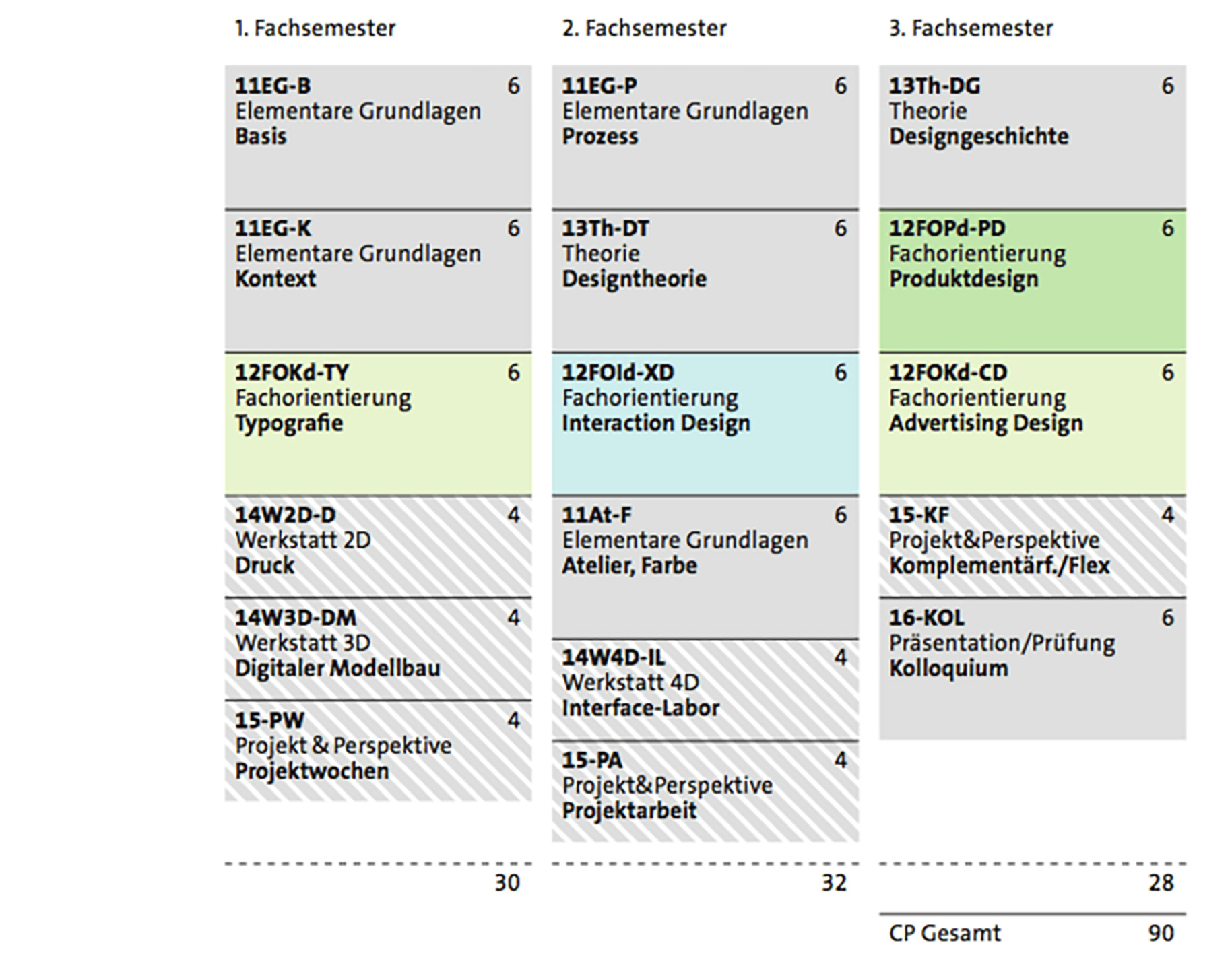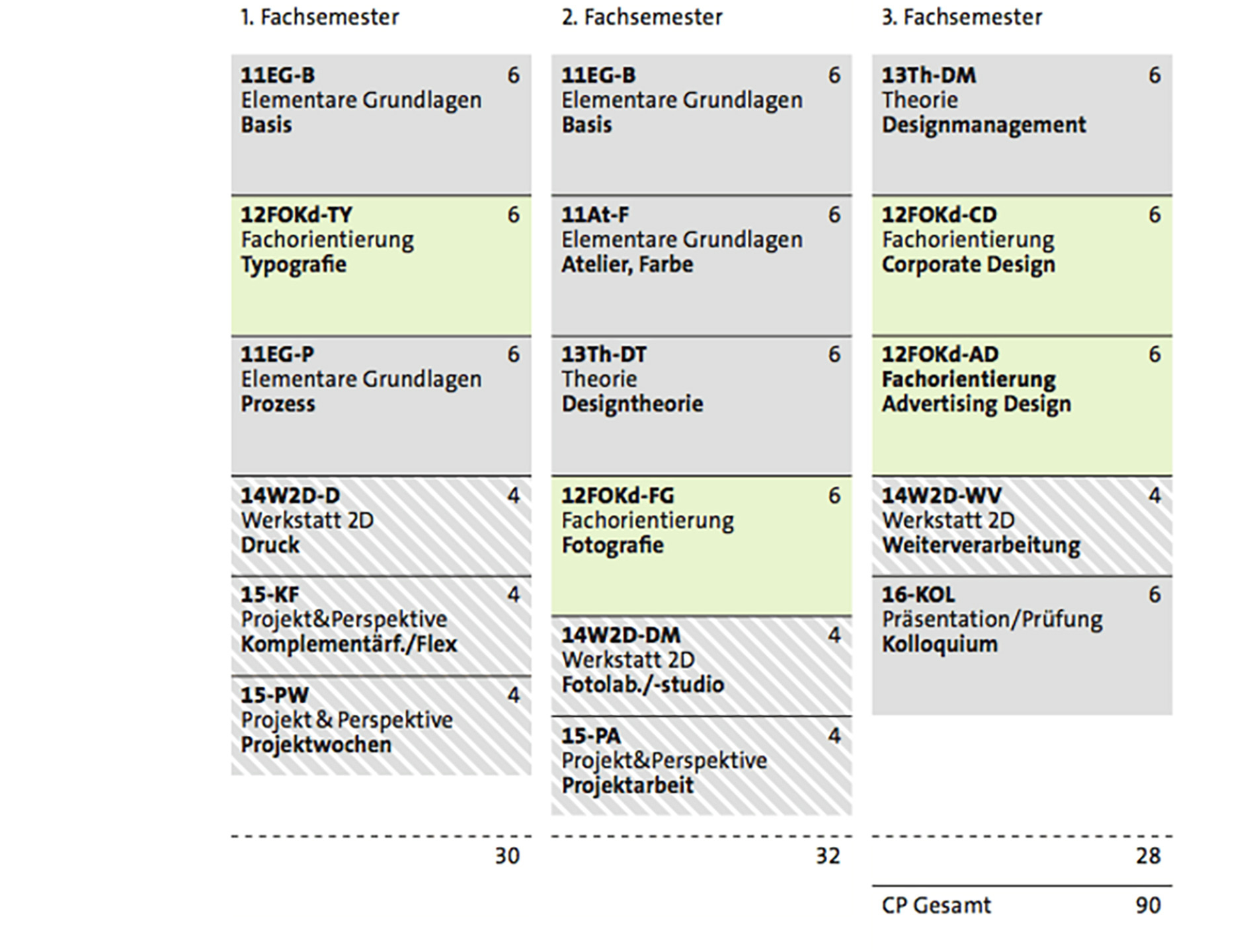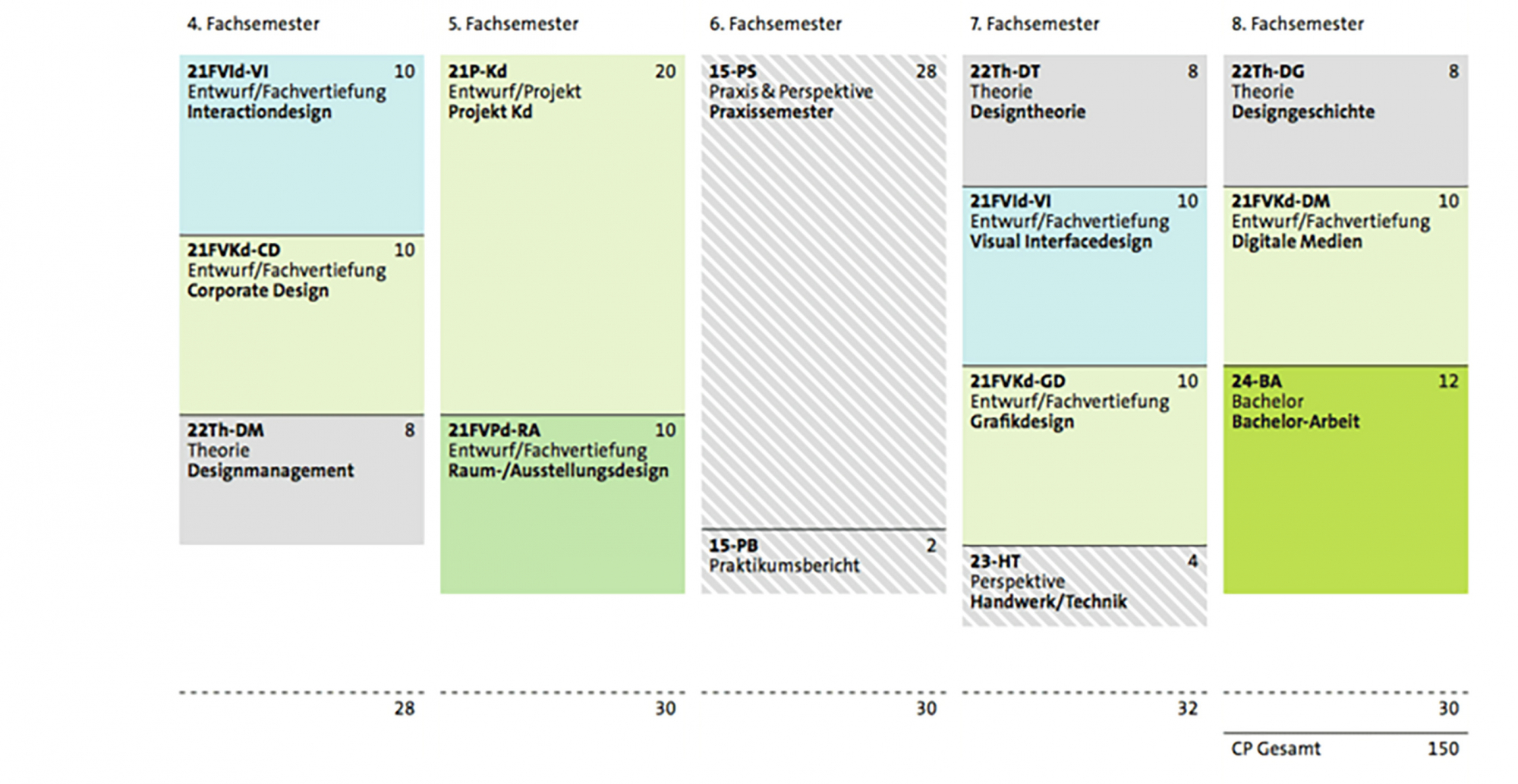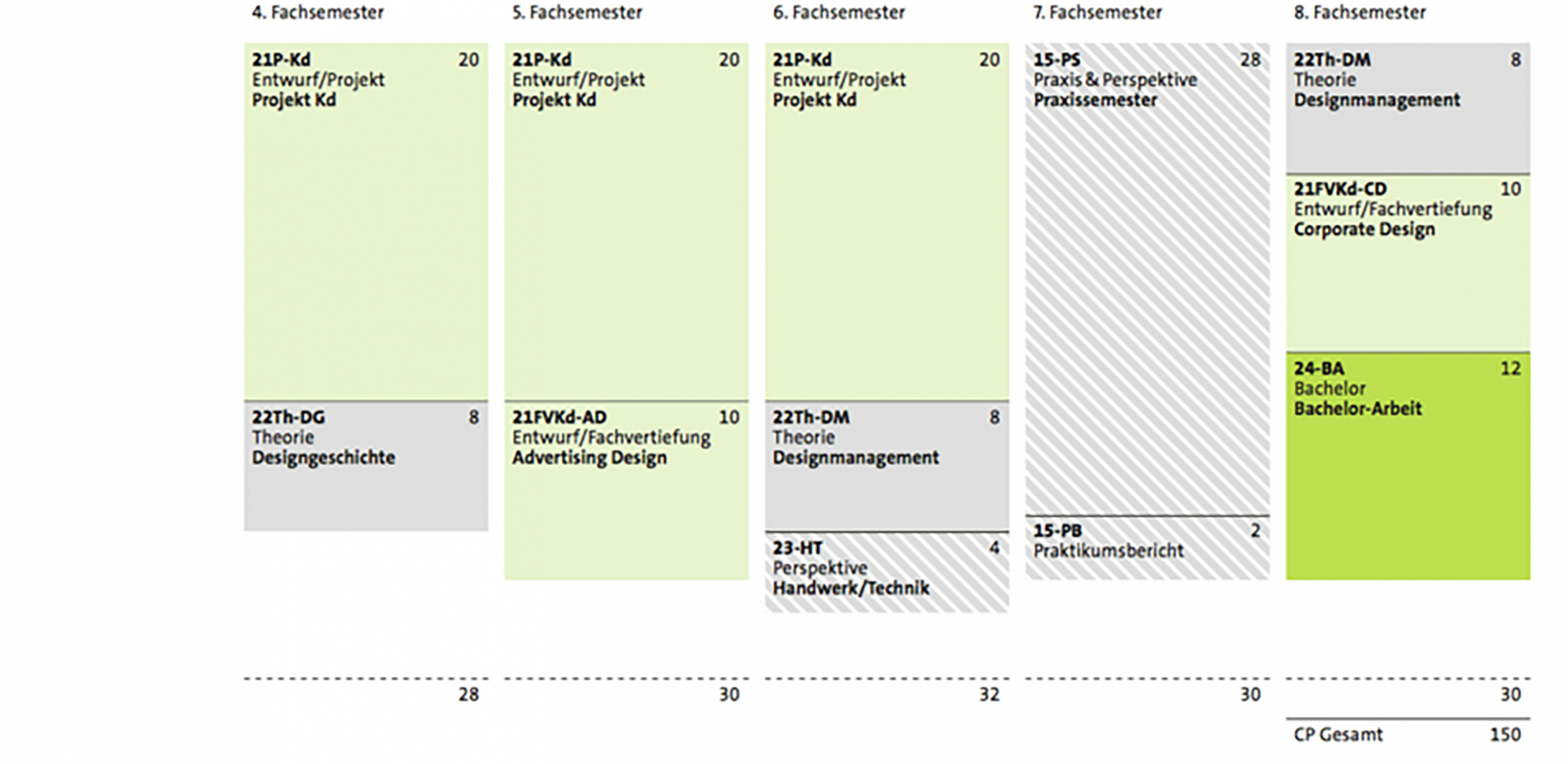Course of studies & modules
The course of study in all three design degree programmes is characterised by an extremely high degree of permeability. Students from interface, communication and product design are explicitly encouraged to also attend courses from the other two degree programmes. In the main study programme, only 50 % of the design credits have to be earned in the student's own degree programme.
In addition to the modules, you will also find exemplary courses of study presented here using the example of two fictitious communication designers. However, the principle also applies to interface and product designers.
Module overviews for all design degree programmes
In the module plan you will find an overview of all modules of the bachelor's degree programmes interface design, communication design, product design as well as the master's degree programme design.
Bachelor's degree programmes (Semester 1–3): Basics and orientation
In the first stage of the degree programme, students learn the basics of design, sound technical skills and theoretical principles, gain initial project experience and receive a first professional orientation. The courses of all three study programmes interface, communication and product design during the 1st study stage are generally taught across all study programmes, although the subject orientation and the workshop courses may be concentrated on specific study programmes. The degree programme demands and promotes individual tailoring through a distinctive system of compulsory electives. The first three semesters of your study programme in Communication Design can therefore be structured as follows - depending on the subject focus.
In the following, we outline two extreme courses of study using striking personas. This makes potential educational developments visible that are made possible by our study concept of elective subjects and transdisciplinarity.

Persona 1: Ann, who can somehow do everything ...
Ann is studying communication design and wants to tap into the complete range of design from the other design courses as well. She chooses two subject orientation courses from the other two degree programmes and also puts together her workshop programme quite colourfully. Ann is on her way to becoming a generalist. What she appreciates about Potsdam is that she will be able to try out almost all facets of design during her studies.

Persona 2: Bill, who knows what he wants ...
Bill is also studying communication design, but unlike Ann, he already knows exactly that he wants to work in the field of layout and corporate design later on. For Bill, subject orientation means "focusing" and so he doesn't resolutely use the possibility of the transdisciplinary in subject orientation - it's enough for him that fellow students from the other degree courses always take part in his communication design courses. Bill has always been interested in visuals and magazines - here at the FHP he can become a specialist. In the workshop courses, too, he purposefully acquires the tools he needs for image and print production. He is excited about the prospect of a degree in which he can devote himself mainly to his hobby horse.
Bachelor's degree programmes (Semester 4–8): Focusing and deepening
The second part of the programme is strongly characterised by design work in predominantly project-oriented assignments - 80 CP, i.e. two thirds of the 120 CP (= 150 CP minus 30 CP for the practical semester), are earned in design work. At least one project must be taken – supplemented by six specialisations; a maximum of three projects can be taken – supplemented by two specialisations. In addition, there are 3 certificates of achievement from theory as well as one certificate of achievement in a technical specialisation or a complementary subject. An entire semester is reserved for the specialised internship, which is credited with 30 CP including a report. This practical semester can be scheduled at the student's own choice. The bachelor's thesis, which is written during the eighth semester, completes the second part of the programme.

Persona 1: Ann, who can somehow do everything ...
Ann continues her explorative path in the second study period; she wants to try out as much as possible. She takes part in only one project and tries to absorb as many different impulses as possible with six subject specialisations. Ann has already built up an enormous professional repertoire with her first professional qualification and will use this "broadliner" competence to apply for a job at a large advertising agency - she has already spent her internship there.

Persona 2: Bill, who knows what he wants ...
Bill can finally apply in practice what he learned in the first part of his studies. Three extensive practical projects are the defining elements of his studies – flanked by further specialised in-depth studies. Bill has also focused on theory. The three projects have ensured that Bill already has practical experience with complex projects after 8 semesters. He will apply for a job as an art director in agencies, offices or editorial offices with a focus on corporate design, advertising or editorial design, or set up his own business in this field. The practical project-oriented training ensures a harmonious career start.